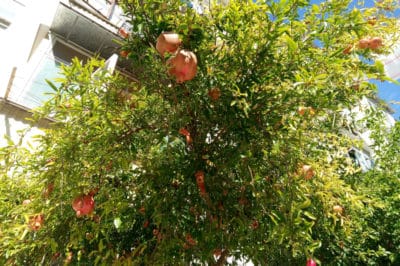Choosing Varieties
One of the most important aspects of growing pomegranates is to choose a variety that is suited for your locality. Over 500 cultivars are available, including:
- A.C. Sweet – adapted USDA Zones 6-10
- Ambrosia – does well inland or at coast
- Parfianka – best in zones 7-10
- Sweet – low chilling requirement
- Wonderful – best in hot inland areas.
Watering Pomegranates
Originating in a warm, arid climate, the pomegranate is drought tolerant. However, it will grow better and certainly produce better with regular water. In most climates, a weekly soaking is adequate. If grown in containers, you may need to water more frequently, especially in hot, windy weather. Don’t over-water – it increases the risk of fungal disease and root rot.
Soil for Pomegranates
Pomegranates originated in areas where the soil was poor and often rocky. They readily tolerate acid or alkaline soils. They do prefer a pH of 5.5 to 7, however. While you can grow good pomegranates in almost any reasonably fertile soil, these trees absolutely must have good drainage. If your soil is high in clay, add coarse builder’s sand or even very fine gravel.
Fertilizer for Pomegranates
In good garden soil, pomegranates will often do fine with no more fertilizer than an organic mulch. Unless your soil is very poor, it’s unlikely you will need to fertilize more than two or three times a year. Do so in the growing season with a 10-10-10 organic fertilizer. Container-grown plants do better with liquid fertilizer and it must be applied more frequently as nutrients leach with watering.
Pruning Pomegranate Trees
Most pomegranates tend to be shrubby and often have multiple trunks. You can prune to a single trunk if you start early. Otherwise, pruning is primarily a matter of cutting out suckers, dead branches or branches that are rubbing together. Container-grown plants may need to be cut back to keep them from outgrowing their pot and should be pruned when repotted.
Pests and Diseases
Fungal infections are the most likely problem with pomegranates and nearly always result from over-watering or poorly draining soils. Copper fungicides and good garden sanitation are helpful in terms of treatment and prevention. Aphids, mealy bugs, scale, whiteflies and thrips can all attack pomegranates – insecticidal soap is useful for controlling these pests.
